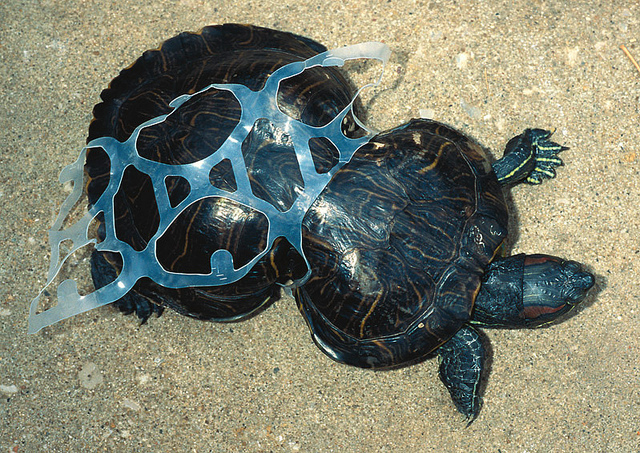Plastic bags floating in the ocean can look a lot like jellyfish.
Endangered sea turtles such as the Olive Ridley Turtle, who feed on jellyfish and other creatures, often mistake floating plastic for their food sources.
We use plastic for everything. Bags, straws, water bottles, to name a few, and about 13 million tons of this plastic is dumped into oceans each year.
13 million tons! Considering the light weight of plastic, that’s a lot of plastic!
It takes decades for a sea turtle to reach maturity, so the cycle of reproduction is not a fast one and once eggs are laid, newly hatched babies face a number of risks from predators and humans before they even make it to the water (conserveturtles.org).
There are seven species of sea turtles, with four of the species having been identified as “endangered” or “critically endangered” and another two being classed as “vulnerable.”
As a society, we get upset when poachers kill endangered animals. I know I sure do—just look at the outrage over Cecil the Lion.
So why then, as a society, are we not just as outraged over the endangered species that are affected by our plastic trash? It seems to me that we are no better than poachers—yes, our effect is unintentional, but knowing the effect of our actions on the turtles and not doing something about it makes us guilty by default. (Just my opinion)
According to a new study by Qamar Schuyler of the University of Queensland, an estimated 52% of sea turtles have ingested plastic in some form or another. Another recent study reported similar findings with sea birds.
“Turtles can be killed directly by ingesting plastics, through blockage of the intestines or through piercing of the intestinal wall,” Schuyler said. They can also die because of toxic chemicals that were used to create the plastic, or that were absorbed during the plastic’s journey through the ocean.
Turtles can starve to death because they feel full after swallowing plastic debris that does not break down.
The team created a model of marine plastic distribution based on found debris. Then they added an overlay of the marine turtle population to study how mush debris the species were likely to encounter. They factored in findings from the marine turtle necroscopies.
“Currently plastics are being produced at an exponentially increasing rate, but globally our waste disposal technology and capacity is not increasing at the same rate,” Schuyler said. “Plus we now know that unseen micro plastics are entering the oceans from our cosmetics, from the clothing we wear, and from fragmentation of larger plastic particles. Unless we take substantial action, the problem is bound to increase.”
Southeast Asia, southern Africa, Hawaii and the eastern coasts of Australia and North America seem to be particularly dangerous to local turtle populations.
Schuyler believes that the tide of this dilemma can be overturned if we collectively take action as a society and individually to do our part.
Individually, we can decrease our use of plastics by using reusable water bottles and shopping bags.
Boycotting the use of cosmetics containing microbeads will also help.
If every person who posted a Facebook comment about Cecil the Lion stopped using disposable plastic bags and bottles we could affect change very quickly and help these innocent and beautiful creatures to rebound from their threatened status.
Who are we to say that lions have more right to life than sea turtles?
Relephant:
Ocean Plastic’s Impact on Wild Sea Turtles.
Top 10 ways to get Plastic out of your Home, Yourself & your Children.
If You Love Animals, Boycott Plastic Bags.
11 Things to Do If You Don’t Want Plastic Soup for Oceans. {Infographic & Video}
Author: Lindsay Carricarte
Editor: Renée Picard
Image: Stefan Leijon at Flickr












Read 1 comment and reply